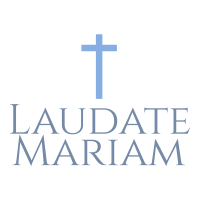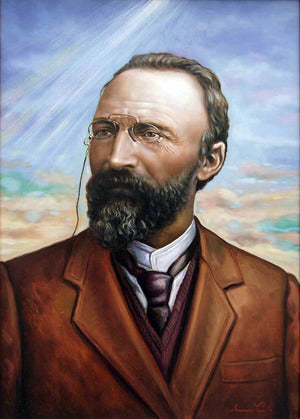Blessed Bartolo Longo's extraordinary journey from a satanic priest to a devout Catholic advocate of the Rosary is a powerful narrative of redemption and divine mercy. Born in 1841 in Latiano, Italy, Longo was initially drawn to the priesthood but detoured into a dark path of spiritualism and occult practices during his university years. His involvement in these practices led him to become a satanic priest, a decision that plunged him into deep psychological and spiritual turmoil.
Satanic Priest
A Dramatic Transformation
One evening, while walking, Longo had a profound mystical experience about which he wrote later:
"As I pondered over my condition, I experienced a deep sense of despair and almost committed suicide. Then I heard an echo in my ear of the voice of Friar Alberto repeating the words of the Blessed Virgin Mary: ‘If you seek salvation, promulgate the Rosary. This is Mary's own promise.’ These words illumined my soul. I went on my knees. ‘If it is true...I will not leave this valley until I have propagated your Rosary.’"
Longo was so moved, he attended a séance and in the middle of it, stood up raising a medal of the Blessed Virgin Mother and yelled, "I renounce spiritism because it is nothing but a maze of error and falsehood."
He famously remarked, "One who propagates the Rosary is saved!" This marked the beginning of his lifelong mission to restore faith in the Rosary and advocate for Marian devotion.
Champion of the Rosary
After his conversion, Longo's life took a complete turn. He moved to Pompeii, an area plagued by religious indifference and poverty.
On March 25, 1871, Longo joined the Third Order of Dominicans, adopting the name Br. Rosario in homage to the Rosary. He soon became involved in charity work in Pompeii with Countess Mariana di Fusco, a wealthy widow he would marry a year later on Pope Leo XIII's recommendation.
Together, they founded a Confraternity of the Most Holy Rosary. To honor Our Lady, they sought a suitable Marian painting. They received a dilapidated painting from Sister Maria Concetta de Litala, which, despite its poor condition, Longo accepted as a divine gift. After restoration, it was placed in a renovated church in October 1873, quickly becoming a site of reported miracles, prompting the bishop of Nola to endorse the construction of a larger church.
That larger church is now the Basilica of Our Lady of the Rosary of Pompeii. This basilica became a center for Marian devotion and attracted pilgrims from all over the world.
Legacy and Beatification
Longo's writings and sermons often reflected his deep theological insights into the Rosary. He viewed the Rosary as a spiritual weapon against evil and a source of peace and reconciliation. His devotion and reformative works led to his beatification in 1980 by Pope John Paul II, who recognized his profound impact on the church and society.
Blessed Bartolo Longo's story is a testament to the power of conversion and the profound impact of the Rosary in transforming lives. His life encourages the faithful to believe in the possibility of redemption and the transformative power of prayer. His profound experience and miraculous conversion are captured in his writings, where he documented his mystical experiences and the messages he believed were from the Virgin Mary, urging him to promote the Rosary.

